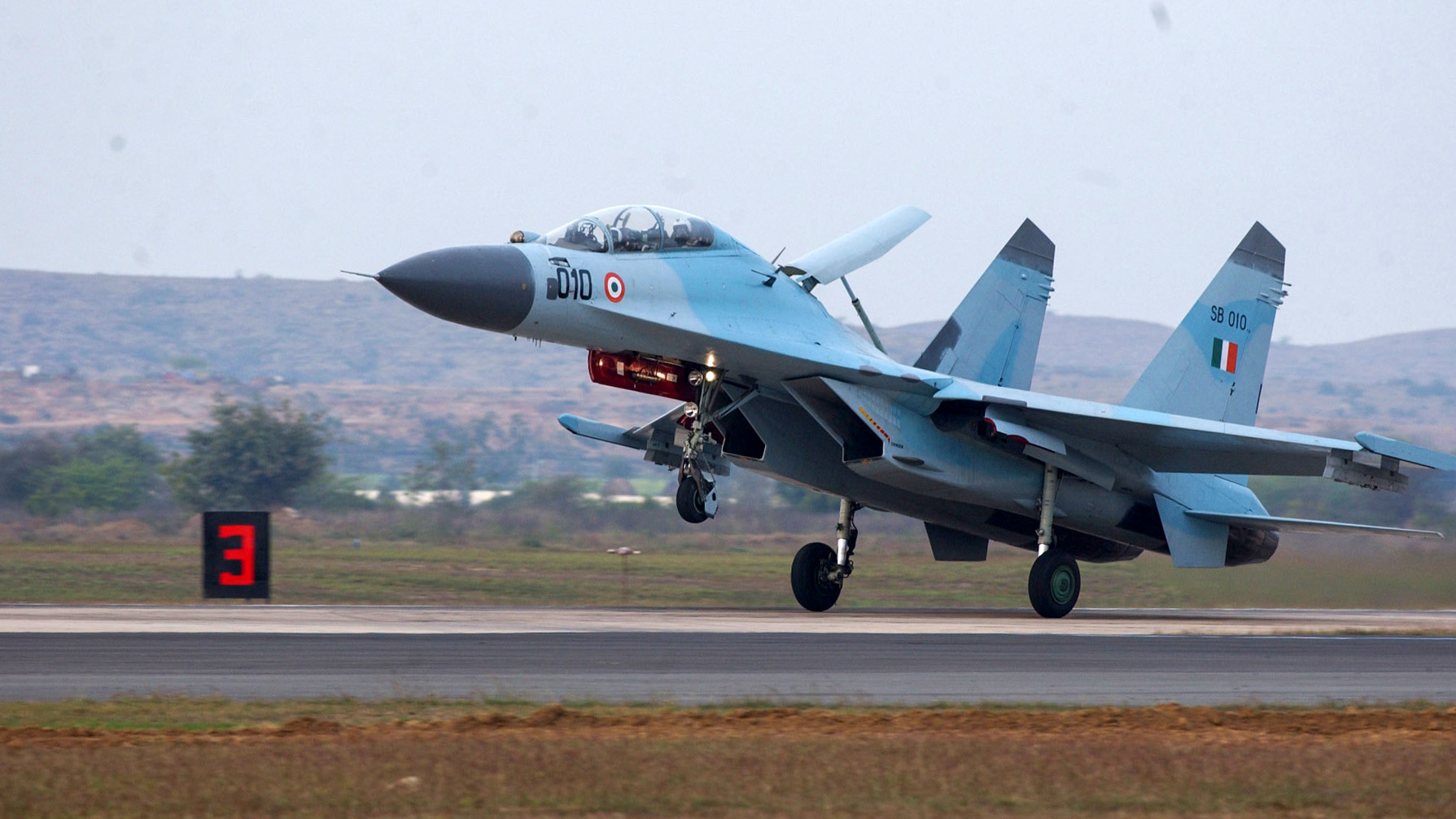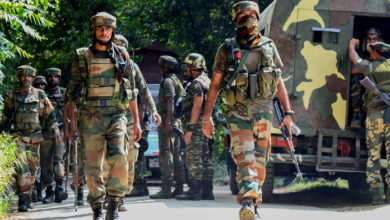2+2 = Closer ties between US and India but Iranian oil looms
US and Indian officials agreed to a new training exercise, but resolving the S-400 issue will have to wait
India’s foreign minister and defense minister hosted their American counterparts this week for the first ever “2+2” dialogue in which the two countries committed to strengthen their defense ties and reached some agreements despite outstanding issues.
In a meeting that was supposed to have taken place months ago, U.S. Secretary of State Mike Pompeo and Secretary of Defense James Mattis took part in the inaugural 2+2 Dialogue with their Indian counterparts, Foreign Minister Sushma Swaraj and Defense Minister Nirmala Sitharaman.
“India attaches the highest priority to its strategic partnership with the United States. It is a partnership based on shared democratic values, growing convergence of interests, and robust people-to-people linkages. We see the United States as the partner of choice in our efforts to achieve, rapid social economic transformation of India,” Swaraj said on Thursday, September 6.
The new format was meant to highlight growing ties, but India’s oil imports from Iran loomed over the visit by the Trump Administration officials to New Delhi for the summit between two of the world’s largest democracies.
The main developments to come out the meeting was a U.S. agreement to provide India with sensitive communications equipment and to schedule a new training exercise. New Delhi and Washington agreed to join a “tri-services exercise” according to a U.S. government statement. The two countries already engaged in the annual Malabar Exercise which this year was shadowed by the Chinese Navy.
“Today, India’s defense forces carry out more training and joint exercises with the United States than with any other foreign partner,” said India’s Defense Minister Nirmala Sitharaman.
The other defense deal concerned a long-negotiated Communications Compatibility and Security Agreement. COMCASA will allow India to improve information network access and secure communications links between U.S. weapons systems. This will be vital for U.S.-Indian exercises in the future as well as for the acquisition of further defense equipment from the United States. Currently, some 60 percent of India’s military equipment measured by value originated in Russia or the former Soviet Union.
The two sides also agreed to work closely together on a host of issues from counter-terrorism to freedom of navigation within international waters.
Just as important was what was not said agreed at the meeting. According to the joint statement, there was no official agreement on India’s import of Iranian oil or its quest to acquire the S-400 air defense system from Russia.
In Pompeo’s opening remarks, it was clear both sides were focused on keeping the negotiations on the big picture. India is seen by the United States as a potential counterweight to expanding Chinese influence in the Indian Ocean. In recognition of the region’s growing importance the United States rebranded its Pacific Command into the Indo-Pacific Command earlier this year.
“Our two nations are united by shared values of democracy, respect for individual rights, and a shared commitment to freedom. Given those values, India and the United States have a natural starting point for advancing a free and open Indo-Pacific,” Pompeo said.
India has at times been reluctant to directly confrontational role regarding China. On the margin increased Indian reticence about China has spilled out into the open. Most notably, India disavowed direct involvement in China’s “One Belt, One Road” Initiative because China is working to develop a road through Kashmir, a region disputed between India and Pakistan. Both countries claim the entirety of Kashmir.
While India is a target of major Chinese investment that Beijing describes as being part of CBI – it has declined to use the term or to attend the initial CBI conference.
Earlier this year French President Emmanuel Macron called for a Paris-New Delhi-Canaberra axis.
We’re not naive: if we want to be seen and respected by China as an equal partner, we must organize ourselves,” Macron said in a speech at an Australian naval base earlier this year during a trip to Asia that also included a stop in New Delhi.
However, Indian Prime Minister Modi has been reluctant to take a more assertive role on China.
Iranian barrels and Russian missiles
U.S officials admitted only that Iranian oil imports were discussed in “detail conversations” during the dialogue.
India is the second largest importer of Iranian crude oil. After China, India’s oil imports from Iran that were steadily rising in January 2013 stood at 150,000 barrels per day and have subsequently climbed to nearly 750,000 barrels per day according to some estimates. This reflects roughly a quarter of Iranian oil exports.
Iran has sought to sweeten the deal for Indian importers of its sour crude. Earlier this week Iran offered Indian oil importers insurance packages and even oil transports to preserve this vital lifeline. Iran will import Indian agricultural goods, pharmaceuticals and healthcare products to avoid international transactions, possibly in violation of the spirit if not the letter of U.S. sanctions. India is also developing an offshore oil and gas field in Iran.
It will take some convincing to assure India that the potential harm done to its economy by new Iranian sanctions is worth the effort. While India is seeking to reduce its reliance on Iranian crude it will likely seek a waiver to continue its oil imports after November 8, experts have said.
Even if it sorts the oil issue, a close relationship with Tehran remains vital for India. India also receives a significant portion of its oil imports from Iraq, whose government is dominated by pro-Iranian elements. Furthermore, India and Iran both have a vested interest in preventing an expanded Pakistani role in Afghanistan.
Toward that end, India has invested as much as $500 million in development of the Iranian port of Chahabar Port as part of the mooted Uzbekistan-Turkmenistan-Iran-Oman transport corridor. That project will allow Indian commerce easier access to Afghanistan and Central Asia.
Conversely, it will also undermine the growth potential of the Pakistani port of Gwadar. China is hedging its bet and assisting in the development of both projects as it seeks to open up the possibility to bring trade overland directly to the Persian Gulf. Perhaps to highlight the project’s importance Iranian authorities announced that management of the port would be turned over to India within one month.
The other serious issue which was not ameliorated in the talks was India’s quest to purchase the S-400 air defense system from Russia. In public remarks in New Delhi, Pompeo said no decision had been reached regarding the S-400 system.
The U.S. is currently involved in a dispute regarding the S-400 system with NATO ally Turkey. Washington believes that the Russian military could gain access to key intelligence about U.S. warplane capabilities if Turkey operates both the F-35 fighter jet and the Russian system. India’s move to purchase the system could affect future military purchases or even lead to sanctions, according to some observers.
American arms producers see a clear opportunity in India’s recent defense increases. This summer India approved a $6 billion increase to its defense spending. According to the Financial Times this means that India is on-track to spend $62 billion on defense this year, a substantial increase from $47 billion half a decade ago.
In moving past areas of difficulty in the relationship both sides were able to describe today’s meeting as a success but the path forward on these contentious issues and others, remains unclear.












